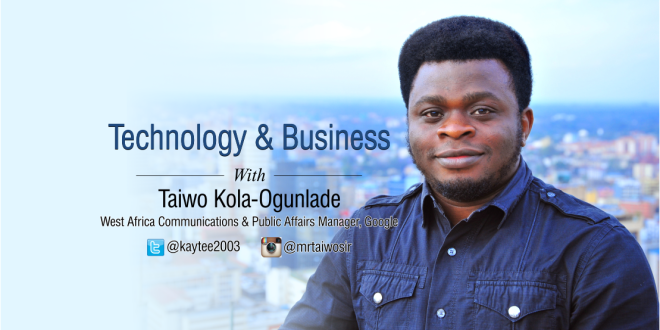Last night, I had some time to think about how different things are today from the 80s. I remembered how my dad would spend a good part of Saturday mornings reading different weekend papers. For him and many other Nigerian fathers in the 80s, the need to consume news was a serious ritual.
Today, I too have the same seemingly insatiable appetite for information, but my Saturday morning ritual is to head online to read up on the news.
I’m not alone in this. Recent reports have shown that our collective time online is increasing, and the internet has now become the primary source of news and information for people living in metropolitan areas.
This doesn’t mean we’re no longer interested in news and information – far from it! Our appetite for all forms of media is even stronger than ever. Young people are often the best bellwether for these things – reports also shown that kids today are now consuming more media a day than the 80s or the 90s. And it also shows that internet users consume more forms of other media, not less.
The internet is going to help feed this appetite, because it has replaced the economics of scarcity with the economics of ubiquity – disrupting a few industries in the process. But while the internet is one of the most disruptive technologies in history, it’s also an incredible platform for innovation.
There are three big web trends that are already driving innovation in the news industry today and make the experience of producing and consuming news even better in the future – the cloud, the social web, and mobile. Let me take each in turn and explain why.
What is the cloud? It’s a shift in computing philosophy, where data is no longer stored on your computer’s memory – it’s stored online, or in ‘the cloud’. You can access this information anytime, anywhere.
The cloud means we can manage massive amounts of data more easily, because we’re no longer restricted by the memory of a single computer. The terabytes of data being created in the world every week can be stored effortlessly online – as can new information that didn’t start life digitally, but has been digitized.
Google Books is an example of this – the works of Shakespeare and the great philosophers have been scanned, digitized, and made available anytime, anywhere, to people in Nigeria and around the world. This is a huge transformation when you think about the kind of information that news stories can now contain – rich, historical information that was previously inaccessible or unmanageable.
As well as storage, the cloud offers enormous computing power. This allows for some pretty cool stuff like translation, which we recently built right into our Chrome browser – 52 different languages detected and translated in seconds. Now we can open up the English web to everyone. What does this mean to a content creator? Every Internet user in the world is your reader. I can read Le Monde or Der Spiegel as easily as I can read local books like the all-time Yoruba school book – Alawiye.
The cloud will make the world even more connected as it breaks down barriers of information storage and language … in other words, the web is getting more social.
In fact, the web of the future is social. We need only look at our own and our children’s web behaviour to recognise that. In a world of proliferating content, people want to follow news that particularly interests them, and when news sites tend to show everything rather than just what I’m interested in, time-poor me is left looking for a new editor. And I find it in my social network.
Twitter sends me interesting articles being read by people I know. Re-tweets from people who are not even in my first network bring me info that I wouldn’t get any other way.
The rise of social sites online is really just the web catching up with life. People are naturally social. The first thing you want to do when you hear something interesting or funny is to share it with someone – news has always spread by word of mouth.
For news publishers, this means that good reporting can be global in an instant. It also means that there is a whole new audience out there wanting not just to read your content, but to engage with it – share it, pass it on, and grow your audience.
This increasingly social web has been made possible in large part by another significant trend which is the third I want to mention – mobile devices. You better believe Twitter would not be the service it is today without millions of people around the world attached permanently to small but immensely powerful computers.
More and more people are going online without PCs. Half of all new internet connections come from mobile devices and a third of people read news on their phones.
Today’s mobile phones are sensor-rich – they are inherently aware of their location, thanks to built-in GPS in most new models; they have ears (microphones); eyes (cameras); and voices (speakers). By their very nature, these devices will revolutionise how we consume news because they will share rich, multimedia, locally relevant information, in forms we want to consume. Mobiles let us all contribute news and share news as we go about our day.
The breakthrough is not identifying these trends – it’s for technology companies and news organisations to work together to turn them into successful business models that increase readership and make money out of content.














When Technology Meets Media: Last night, I had some time to think about how different things are today from t… https://t.co/VB2CXj8Xh0
When Technology Meets Media: Last night, I had some time to think about how different things are today from t… https://t.co/VWvMj0oFnF